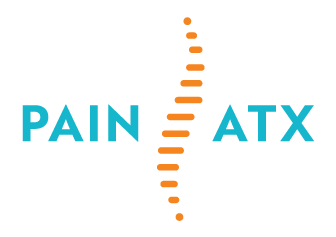Low back pain (LBP) is a common disorder involving the muscles, nerves, and bones of the back.[4] Pain can vary from a dull constant ache to a sudden sharp feeling.[4] Low back pain may be classified by duration as acute (pain lasting less than 6 weeks), sub-chronic (6 to 12 weeks), or chronic (more than 12 weeks).[3] The condition may be further classified by the underlying cause as either mechanical, non-mechanical, or referred pain.[5] The symptoms of low back pain usually improve within a few weeks from the time they start, with 40–90% of people completely better by six weeks.[2]
In most episodes of low back pain, a specific underlying cause is not identified or even looked for, with the pain believed to be due to mechanical problems such as muscle or joint strain.[1][4] If the pain does not go away with conservative treatment or if it is accompanied by “red flags” such as unexplained weight loss, fever, or significant problems with feeling or movement, further testing may be needed to look for a serious underlying problem.[5] In most cases, imaging tools such as X-ray computed tomography are not useful and carry their own risks.[9][10] Despite this, the use of imaging in low back pain has increased.[11] Some low back pain is caused by damaged intervertebral discs, and the straight leg raise test is useful to identify this cause.[5] In those with chronic pain, the pain processing system may malfunction, causing large amounts of pain in response to non-serious events.[12]
Low back pain treatment assessments have similar guidelines in clinical practice. Education regarding a biopsychosocial framework looked at non-pharmacological treatment, exercise, and psychological programs from persistent symptoms. Acclaimed principles looked at medication use, imaging, and surgery options. Practices that show evidence with their guidelines have the greatest potential. A search was conducted for recent literature on PubMed.gov using the search terms lower back, pain management, and integrative pain. This is a review on an article based on low back pain treatment and appropriate methods and guidelines.
Substantial gaps show evidence in patient care in low-income, middle-income, and high-income countries. Rosenberg et al. (2015) concluded that low back pain has resulted in over 2.6 million visits to the emergency department a year in the United States. Best implementations towards the clinical practice for low back pain looked at a model known as STarT Back. The first component looks at a questionnaire to look at low, medium, or high risk persistent disabling pain and the second matches treatments regarding the risk.
Key features look at reducing unwarranted health care for low back pain by supporting patients to being active and staying at work. Other interventions looked at reforming unhelpful patient clinical pathways that drop sickness absence and disability pensions. Collaborative efforts can develop effective solutions looking at low back pain treatments for patients globally.
Figure. Netherland’s workers on sick leave in comparison for total days of sick leave. (2002-2007)
Reproduced from Lambeek et al,100 with permission from Wolters Kluwer Health.
Austin Spine & Wellness Center Text or Call
(512) 501-1770
References
- Casazza BA (February 2012). “Diagnosis and treatment of acute low back pain”. American Family Physician. 85 (4): 343–50. PMID 22335313.
- ^ Jump up to:a b c d e f g da C Menezes Costa L, Maher CG, Hancock MJ, McAuley JH, Herbert RD, Costa LO (August 2012). “The prognosis of acute and persistent low-back pain: a meta-analysis”. CMAJ. 184 (11): E613–24. doi:10.1503/cmaj.111271. PMC 3414626. PMID 22586331.
- ^ Jump up to:a b c d e f g h Koes BW, van Tulder M, Lin CW, Macedo LG, McAuley J, Maher C (December 2010). “An updated overview of clinical guidelines for the management of non-specific low back pain in primary care”. European Spine Journal. 19 (12): 2075–94. doi:10.1007/s00586-010-1502-y. PMC 2997201. PMID 20602122.
- ^ Jump up to:a b c d e f “Low Back Pain Fact Sheet”. National Institute of Neurological Disorders and Stroke. 3 November 2015. Archived from the original on 4 March 2016. Retrieved 5 March 2016.
- ^ Jump up to:a b c d e f g h i j k l m n o p q r s t u v w x Manusov EG (September 2012). “Evaluation and diagnosis of low back pain”. Primary Care. 39 (3): 471–9. doi:10.1016/j.pop.2012.06.003. PMID 22958556.
- ^ Jump up to:a b c d e f g h i j k Qaseem A, Wilt TJ, McLean RM, Forciea MA (April 2017). “Noninvasive Treatments for Acute, Subacute, and Chronic Low Back Pain: A Clinical Practice Guideline From the American College of Physicians”. Annals of Internal Medicine. 166 (7): 514–530. doi:10.7326/M16-2367. PMID 28192789.
- ^ Jump up to:a b c d e f g h i j Hoy D, Bain C, Williams G, March L, Brooks P, Blyth F, et al. (June 2012). “A systematic review of the global prevalence of low back pain”. Arthritis and Rheumatism. 64 (6): 2028–37. doi:10.1002/art.34347. PMID 22231424.
- ^ Jump up to:a b c d e Vos T, Flaxman AD, Naghavi M, Lozano R, Michaud C, Ezzati M, et al. (December 2012). “Years lived with disability (YLDs) for 1160 sequelae of 289 diseases and injuries 1990-2010: a systematic analysis for the Global Burden of Disease Study 2010”. Lancet. 380 (9859): 2163–96. doi:10.1016/S0140-6736(12)61729-2. PMC 6350784. PMID 23245607.
- ^ Jump up to:a b c d e “Use of imaging studies for low back pain: percentage of members with a primary diagnosis of low back pain who did not have an imaging study (plain x-ray, MRI, CT scan) within 28 days of the diagnosis”. —. 2013. Archived from the original on 4 October 2013. Retrieved 11 June 2013.
- ^ Jump up to:a b Chou R, Fu R, Carrino JA, Deyo RA (February 2009). “Imaging strategies for low-back pain: systematic review and meta-analysis”. Lancet. 373 (9662): 463–72. doi:10.1016/S0140-6736(09)60172-0. PMID 19200918.
- ^ Jump up to:a b c d Deyo RA, Mirza SK, Turner JA, Martin BI (2009). “Overtreating chronic back pain: time to back off?”. Journal of the American Board of Family Medicine. 22 (1): 62–8. doi:10.3122/jabfm.2009.01.080102. PMC 2729142. PMID 19124635.
- ^ Jump up to:a b c d e Salzberg L (September 2012). “The physiology of low back pain”. Primary Care. 39 (3): 487–98. doi:10.1016/j.pop.2012.06.014. PMID 22958558.
Foster, N. E., Anema, J. R., Cherkin, D., Chou, R., Cohen, S. P., Gross, D. P., … & Turner, J. A. (2018). Prevention and treatment of low back pain: evidence, challenges, and promising directions. The Lancet, 391(10137), 2368-2383.
Rosenberg, Alan, et al. “Early trends among seven recommendations from the Choosing Wisely campaign.” JAMA internal medicine 175.12 (2015): 1913-1920.




